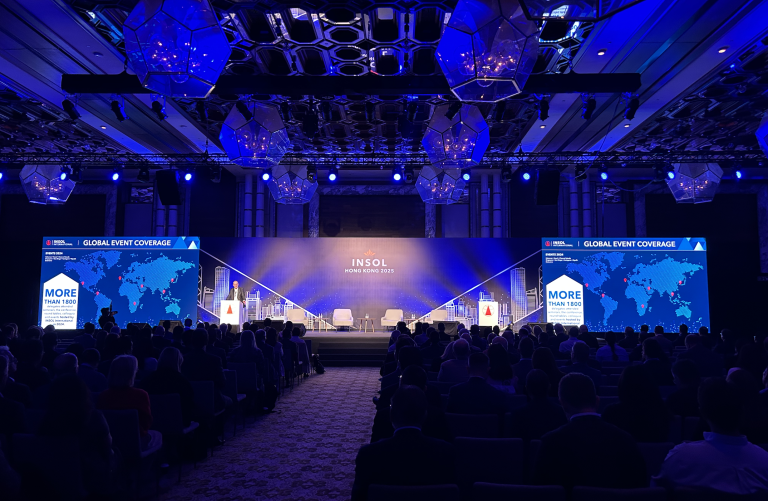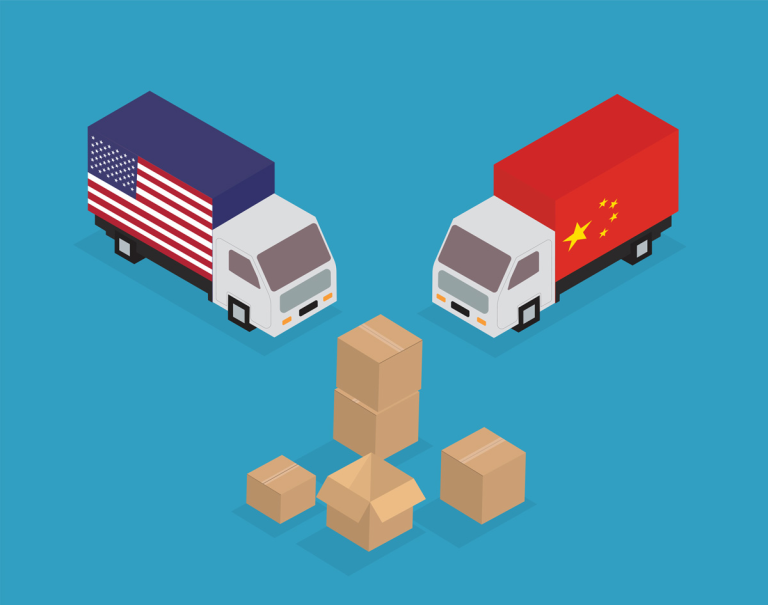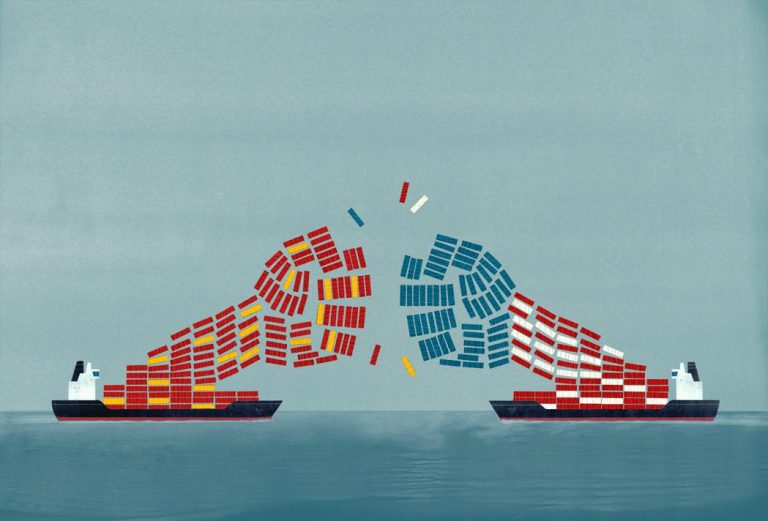Shoppers in Hong Kong received a pleasant surprise early last month when supermarkets and wet markets displayed an abundance of cheap cherries. The price of American cherries had dropped by around 20 percent compared with last year. The price of apples, plums, blueberries, peaches and prunes also fell by between 10 percent and 20 percent, and beef from the United States was also cheaper.
Fruit lovers had the brewing trade war between the U.S. and China to thank for this. Originally destined for the Mainland, the cherries were diverted to Hong Kong after Mainland China slapped a 25 percent tariff on US$34 billion worth of American products ranging from fruits, seafood, meat, vegetables, dairy products, and poultry, to cigarettes and cars on 6 July, in retaliation to similar charges imposed on certain Chinese imports by the U.S.
Anthony Tam, Executive Director of Mazars Tax Services, and former chairman of the Institute’s Taxation Faculty Executive Committee, warns that the price of food is likely to inflate if the trade war continues for too long. “It is inevitable that the higher tariffs will bring in price inflation in China, and possibly in Hong Kong,” he says.
The trade war started in January when U.S. President Donald Trump announced tariffs of 30 percent on imported solar panels and 20 percent on large washing machines, many of which come from the Mainland. These were soon followed by a 25 percent tariff on steel imports and 10 percent on aluminum imports. While the early rounds of tariffs did not solely impact the Mainland, Trump singled out the country for criticism for what he considered to be unfair trade practices, accusing it of depreciating its currency and stealing the intellectual property of U.S. companies.
“Free trade is an important foundation of our success. The total value of traded goods and services was about 375 percent of our gross domestic product.”
As the world’s largest steel exporter, Mainland China retaliated with its own tariffs of between 15 to 25 percent on 128 products from the U.S., from fruit and wine to pork products.
The tit-for-tat threats continued, culminating in both sides imposing 25 percent tariffs on US$34 billion of the other’s goods on 6 July. Things continued to escalate, with Trump most recently announcing tariffs on a further US$200 billion of Chinese goods, to which the Mainland responded with tariffs on an additional US$60 billion of U.S. imports. To date, the U.S. has imposed exclusive tariffs on US$250 billion worth of Mainland China’s products, and the Mainland has put them on US$110 billion of U.S. ones.
The trade war threatens to have a significant impact on Hong Kong’s economy, which is highly dependent on trade. The value of exports reached US$497.3 billion in 2017.
In April, Financial Secretary Paul Chan warned that the current tensions could affect jobs in Hong Kong. “Free trade is an important foundation of our success. The total value of traded goods and services was about 375 percent of our gross domestic product (GDP),” Chan wrote on his official blog.
Impact on Hong Kong
While the tariffs Trump has imposed on the Mainland do not apply to Hong Kong, the city is still expected to suffer as a result of the situation. Johnson Kong, Managing Director – Non-Assurance at BDO Hong Kong, and the Hong Kong Institute of CPAs’ Vice President, explains: “Hong Kong is an entrepôt, so the trade war has a very significant effect on us.”
He says the total volume of U.S.-China trade that passed through Hong Kong in 2017 was worth around HK$350 billion. “This represents 13 percent of Hong Kong’s GDP. It is not a small figure at all.” He adds that while China exported US$505 billion of goods to the U.S. in 2017, this figure only captures finished products, with much of the raw material and components passing through Hong Kong.
Tam agrees that the trade war will have a significant impact on Hong Kong, pointing out that of the US$34 billion worth of Chinese goods that Trump imposed tariffs on in July, 17 percent passes through Hong Kong. He adds that nine percent of the U.S. products on which the Mainland has imposed tariffs, also go through Hong Kong. “It remains to be determined what the impact is of the additional US$200 billion worth Chinese products to be subject to additional customs duty,” he says.
Kong explains that trading and logistics accounts for between 22 percent to 23 percent of GDP and employing around 20 percent of Hong Kong’s labour force. “The trade war will for sure slow down Hong Kong’s economic growth,” he says.
The situation is also expected to have an impact on other areas of the economy. The strong Hong Kong dollar, due to its peg to the U.S. dollar, and the depreciating Renminbi, has led to a fall in Mainland visitors, impacting the tourism sector, Kong says.
The professional services sector is also likely to suffer, with Kong expecting to see a fall in demand for services relating to import and export activity, such as trade financing and insurance on goods going through the city. He adds that the negative impact on Hong Kong companies is reflected in the Hang Seng Index, which has been declining steadily since the trade war started in January.
Small- and medium-sized enterprises (SMEs) in Hong Kong are also being hit. Tam points out that many of the trading companies in Hong Kong are SMEs.
“About 70,000 of these traders have manufacturing bases in China, and most are in the Pearl River Delta,” he says. “The industries that would be affected the most would be the trading sectors and the related industries such as transhipment business and the cargo terminals.”
He adds that other industries indirectly impacted include the legal, accounting and logistic sectors, which support the trading companies. Kong agrees: “Most SMEs are in the import-export wholesale industry, followed by the business and professional services industry. Many of these will be affected by the trade war.”
Logistical challenges
Logistics companies are experiencing mixed fortunes as a result of the tariffs. Institute member Terence Wong, Chief Financial Officer of Greater China at DHL Global Forwarding, a division of the logistics company providing air and ocean freight forwarding services, says: “As one of the world’s leading logistic service providers, we are expecting a direct hit on our business, mainly in the trade lane between China and U.S., in both exports and imports.”
He adds that because the trade war is not yet at its full scale, with many consumer products not yet covered, the full impact is not yet being felt. “Most of our customers are boosting their exports before the trade-war escalates to the next level, and we saw an unexpected volumes growth in August,” he says. “However, once the trade war escalates to US$200 billion, covering most consumer products, then we are expecting the volumes will drop in the next two to three months.”
Eddie Lau, Group Financial Controller at logistics company Kerry Logistics, and an Institute member, points out that the Mainland is no longer the world’s factory, with many large producers shifting their production facilities from Mainland China to lower cost locations in Southeast Asia several years ago.
“As one of the world’s leading logistic service providers, we are expecting a direct hit on our business, mainly in the trade lane between China and U.S., in both exports and imports.”
He thinks the tariff situation will accelerate this process among medium-sized manufacturers who still produce their products in the Mainland. “They have been in China for many years, but now they have no choice but to move some of their production facilities down to Southeast Asia,” he says.
Lau adds that the country of origin of some products is also becoming less clear-cut. He explains that many Mainland manufacturers are now only carrying out partial assembly in the Mainland, with the final assembly done in Southeast Asia, before products are shipped to the U.S. “Today with globalization, what is made in China is already very blurred. As a result, we call the current situation a trade diversion not a trade war,” he says.
He expects there to be more activity in Asia as a result of the political tension, which benefits Kerry Logistics, as it is strong in Southeast Asia. “Because of this situation, we have got more business by moving parts to Southeast Asia; we have got more cargo movement than before.”
But Lau adds that this higher volume may not last over the long term, particularly if the U.S. becomes more stringent in checking a product’s country of origin for all of the major parts of a product.
What next?
It seems unlikely the trade war will be resolved quickly. Not only were further tariffs imposed by both side this month, but Trump is threatening to introduce them on an additional US$267 billion of Chinese goods, meaning they would cover all Chinese imports. There are also no talks currently scheduled to try to resolve the issue. Even before the latest round of tariffs were imposed, economists were not expecting a quick resolution.
In a survey carried out by Bloomberg in July, economists forecast the trade war to last between three months and three years, with the average analyst expecting it to continue for another year.
Nick Marro, Analyst at The Economic Intelligence Unit, points out that the core of the dispute revolves around Mainland China’s economic policy, as well as how the U.S. and Mainland China approach the rules-based international trading system. “Even if both sides are able to dial-down the trade war in the short term, which looks increasingly unlikely, these fundamental differences will ensure that bilateral friction between both countries persists in the long term,” he says.
“We are expecting a worst-case scenario that it will last for quite a while, maybe until the end of Donald Trump’s presidency.”
Wong at DHL is also pessimistic: “We are expecting a worst-case scenario that it will last for quite a while, maybe until the end of Donald Trump’s presidency,” he says. But with mounting pressures on both sides, Kong believes it will be resolved sooner, possibly within three to six months.
Until a resolution is reached, Tam points out that companies could consider doing customs planning. “There are U.S. customs specialists advising clients on this situation. Trading firms should consult these advisors to reduce the impact.”
He explains that U.S. importers can use the concept of “first sales approach” by declare the factory price, rather than the trader selling price of goods, in order to determine the U.S. custom duty, reducing the amount they have to pay. But with no end to the current tensions in sight, the impact is likely to be felt for some time.
Wong says: “I think this could be the biggest disruption to the global economic system that we have seen in decades.”
United States tariffs on US$200 billion worth of Chinese goods and retaliatory tariffs by Beijing on US$60 billion worth of U.S. products took effect on 24 September.
On 22 January, United States President Donald Trump approved a 30 percent tariff on solar panels and a 20 percent tariff on washing machines. The move was not received well by Mainland China, which produces 65 percent of the world’s solar modules.
















